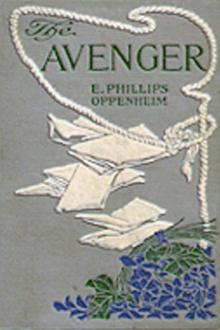Hitler's Terror Weapons, Brooks, Geoffrey [cat reading book .txt] 📗

Book online «Hitler's Terror Weapons, Brooks, Geoffrey [cat reading book .txt] 📗». Author Brooks, Geoffrey
These USAF sightings were of an aircraft at a much higher stage of development than anything the United States could have put into the air at the time, (or now, if it was capable of Gravity II travel). It was admitted by the US authorities in the CIOS-BIOS/FIAT 20 report that in aeronautics and all methods of jet and rocket propulsion and guidance systems, at the war’s end the Germans were ahead of the US by at least ten years. By virtue of the quality of observers involved – rated USA officers, test pilots and aeronautical scientists – we can make a positive statement. Either the crescent-shaped aircraft was German-built and operating from some clandestine base. Or it came from the Beyond. One must choose, for there is no third plausible possibility.
German Flying Saucers – The Alleged Machines
The German tradition alleges that Spitzbergen was used for some of their test flights. In a video-recorded interview, Andreas Epp, an aeronautics writer and one of the five principal engineers involved in the German project during the war, stated that a flying disc under remote control from Breslau crashed and was wrecked on Spitzbergen while attempting a landing. In late August 1946 Air Force General James H. Doolittle arrived in Stockholm to investigate UFO sightings along with Swedish military intelligence but his first mission was to visit Spitzbergen, where he supervised the shipment aboard the battleship Alabama of the remains of “a crashed UFO”. According to former crew members of the warship, the bodies of “aliens” had been found, but the craft was thought to be “a short-range reconnaissance saucer” because “no provisions were found aboard”.
Since Lt General Twining’s report also stated that there was:
“lack of physical evidence in the shape of crash-recovered exhibits which would undeniably prove the existence of these unidentified flying objects”
this tends to confirm that the wreckage of the Spitzbergen flying saucer brought to the United States by sea in 1946 was of terrestrial origin and German,161 and that the craft, though remote-controlled, had crew aboard, probably to handle the tricky landing procedure which led to their demise.
In the 25 April 1953 edition of the Hamburg quality newspaper Welt am Sonntag, scientific correspondent Dr Werner Keller interviewed Senior Engineer Georg Klein, former special adviser to Reich Minister Speer. Klein confirmed that prototypes had been built in Germany during the Second World War:
“On 14 February 1945 in Prague I witnessed personally the first start of a manned RFZ (circular aircraft). This machine reached a height of 12.4 kms within three minutes and in level flight could maintain a speed of 2200 kms/hr. The flying disc has a practically perfect aerodynamic form and speeds in excess of 4000 kms/hr are feasible. These fantastic velocities require special metal alloys, for existing materials for aircraft construction would melt. We had a special alloy. The start in Prague was the culmination of research and development begun in 1941. By the end of 1944 there were three different models completed. Miethe had built a discus-type, non-rotating disc of 42 metres diameter. The designs of von Habermohl and Schriever had a broad-surfaced outer ring which revolved about a fixed spherical cabin. This ring had adjustable vanes and could take off and land vertically. On the approach of the Red Army the prototypes in Prague were destroyed.”
If Engineer Klein witnessed this flight personally he would not have seen much of it, for the Luftflotte VIII War Diary entry for the day in question records that Prague had low cloud cover down to 800 metres with complete overcast, rain, snow and poor visibility. This is excellent weather if one does not wish the neighbourhood to witness the miraculous attributes of your flying saucer. Klein does not state whether it was the Miethe discus-type or the Schriever VTOL design which ascended into the low cloud at Prague. Another unmentionable is the method of propulsion. All German aeronautical engineers were contradictory or silent on these two points. The fantastic claim by Klein that the Prague flying disc could fly at 2000 kms per hour justifies the heat-resistant alloys used in the craft’s construction. The reason for these machinations we will see shortly.
The German tradition states that the first proposed designs for a jet- propelled circular aircraft (RFZ) were offered to the Luftwaffe in 1938 but declined. The USAF report in 1947 considered that even a subsonic flying saucer development “would require extensive detailed development, would be extremely expensive, time-consuming and at the considerable expense of other projects”. All the more astonishing then that the entire German programme, from flying model to maiden manned flight, occupied less than three years between 1942 and 1945 in wartime Germany.
Following the successful flight of Rudolf Schriever’s model Flying Turtle on 3 June 1942, he teamed up at once with Professor von Habermohl to build the manned version. Three or four types were produced, fitted with hydrogen peroxide engines, but were found unsatisfactory in one way or another and the Luftwaffe supposedly rejected all of them. Prototype MIIB, for example, was a broad-surfaced outer ring with adjustable vanes revolving about a fixed spherical cabin, thus more helicopter than flying saucer. This VTOL machine was allegedly also tried with a motor designed in the Kertl Factory, Vienna, by the Austrian inventor Professor Viktor Schauberger, “the pioneer of anti-gravity”, it being claimed that the motor worked on the implosive principle. Whatever the method was it has never been revealed, but rapid declutching was hinted at. The energy process is supposed to have used a small electric motor of 20,000 revs. Calculations showed that a 20-cm disc gyrating at this speed generated a tornado-like vortex sufficient to levitate a weight of 228 tonnes to an indefinite height. Nothing was ever patented, its like is





Comments (0)